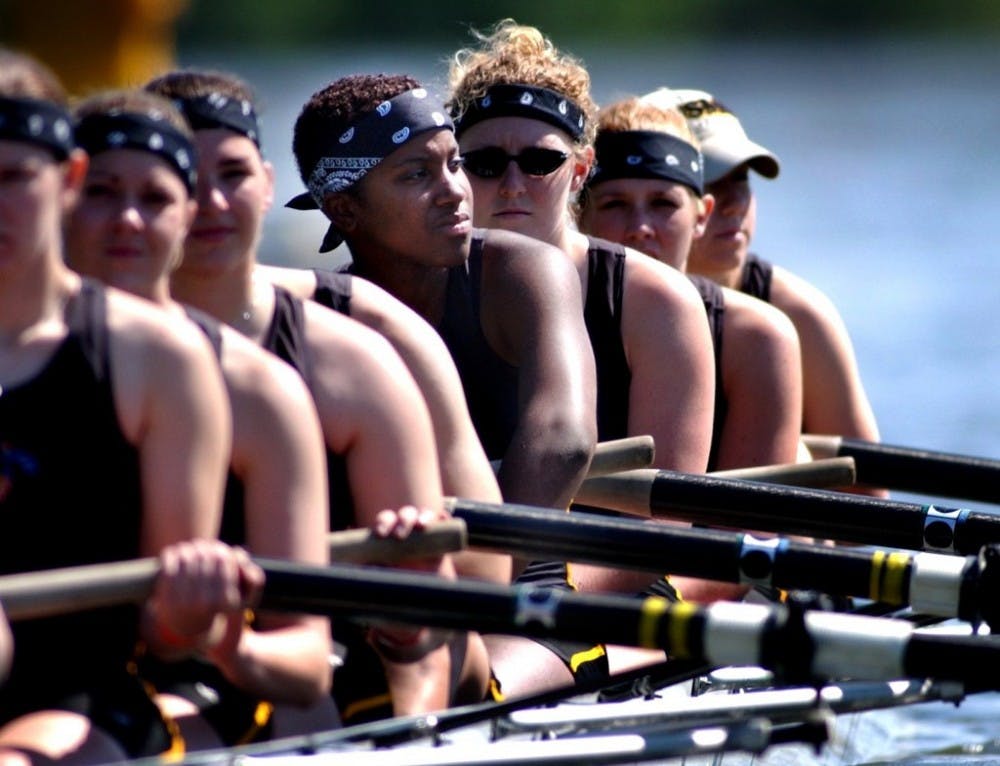Forty-two years ago, a familiar piece of landmark legislation, Title IX, was passed to ensure gender equality at educational institutions. Widely known as the law that bolstered female athletics, its positive effects extend far beyond the playing field, as Title IX has helped women solidify a more prominent place in academia as a whole.
Over the past four decades, the landscape of the American university has drastically changed, and Title IX’s policies have come under increased scrutiny for failing to account for that changing environment. By not evolving with the times, the strict enforcement policies of the law now pose a threat to an increasing number of men’s athletic teams. As Elon University welcomes a women’s lacrosse team, the question remains if we will see any new men’s sports in the near future.
Between 1980 and 1999, 40 percent of NCAA and NAIA wrestling teams were eliminated. In 1980 there were 80 college men’s gymnastic teams. Today, fewer than 20 remain.
The law set out to increase participation of a historically underrepresented gender but questions are now being put forth regarding the fact so many male athletes are watching their opportunities dwindle as a result of Title IX enforcement.
Sports programs such as men’s gymnastics, men’s track and men’s swimming have been cut at campuses across the country in order to make sure the school complies with the NCAA.
Title IX is by no means the problem. It has benefited women both on and off the athletic field and increased female participation across educational institutions nationwide. The problem is the NCAA’s compliance standards and the way schools go about meeting these standards.
When Title IX was established, the Department of Education’s Office of Civil Rights created three paths that a university can take to show compliance.
First, a university can show that it is demonstrating a continual expansion of athletic opportunities for the underrepresented sex (historically female). Second, the school can show that it is accommodating and meeting the interest level of the underrepresented sex. Finally, the third and most common path to show compliance is to provide athletic opportunities that are substantially proportionate to the student enrollment at a university.
Universities are constantly seeking to expand their athletic departments in order to provide and renew athletic interest from both current and future students. Since women now outnumber men, athletic programs struggle to find a proportional number of female athletes to balance out the ratio.
More often than not, it is easier and cheaper to cut a male team than add an additional female team in order to create a proportion that complies with NCAA standards. The third path remains the most troubling, and consistently gives way to the unfortunate practice known as roster management, in which many universities are padding women’s rosters with under qualified athletes and trimming the rosters of men’s teams in order to comply with NCAA standards.
Outside of simply cutting men’s teams, universities meaninglessly inflate female rosters and sometimes count men on their practice squads as female athletes. That is not real progress, for it encourages cheating the system to avoid sanctions and lawsuits.
This unintended consequence is at the root of the problem for Title IX. The enforcement of the law must be revised, and the language must be changed to reflect the student bodies of educational institutions.
Title IX came into existence to give opportunities for both sexes — to provide participation for both men and women. It was never meant to limit the opportunity for men nationwide.
The current system of enforcement is not suitable for the modern college environment, and, if it is left unchanged, we will continue to see the elimination of men’s sports around the country. Eliminating men’s sports just to meet a certain proportion of a student body is not in the spirit of Title IX. The college landscape has changed, and the implementation and enforcement of the law should change with it.
Members of the Editorial Board are Nick Foley, Jonathan Black, Katy Canada, Alex Francis and Lauren Phillips.


